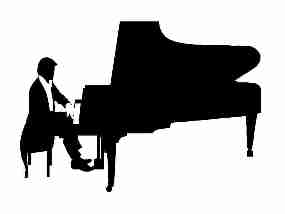|
STEPS PERFORMED ON OUR RECONDITIONED PIANOS
Below
is an explanation of many of the tasks performed on our reconditioned used
pianos. We realize that the general public is at the mercy of
music stores since much of the inner workings of a piano is unknown to
most. My goal is to show you, using plain language and photos, what
we do to our used pianos and what you should look for in a reconditioned,
used piano. These are the high points, some pianos will require
additional service and repairs depending on condition. The photos
below follow the reconditioning of a nice, not very old Yamaha studio
piano. All photos are
clickable for a larger image Basic Disassembly and
Cleaning Since most people
do not know how to disassemble a piano, it is safe to say that the
majority of pianos on the market require cleaning. Even if the keys
were kept covered, dirt and dust and more will find their way into the
moving parts of the piano. It is common to find rodent droppings and
nests, coins, hairpins, and plenty of just plain old dirt and dust.
Not only is it unsettling to think this accumulated trash is in the piano,
it can also cause sticking keys, premature wear on the moving parts and
create an unpleasant odor.
 |
Here is a photo showing the piano with the removable
case parts gone. |
  |
  |
  |
| The six photos above show some of the
typical debris encountered in the average piano. This
example is actually pretty clean. The top left photo shows a
stray piece of felt that has been chosen by a rodent to use as
building material, needless to say this not only needs cleaning
up, but the damaged felt will also have to be replaced. The
top right photo shows the remains of a spider, thought to be a
recluse - any entomologist out there specializing in arachnids
feel free to confirm or refute this. The middle photos show
some rodent droppings and the bottom photos show a view under the
keys - more felt, droppings and sawdust. |
 |
My personal favorite item to find - money. To
date, the most unusual item found was a loaded .38 police special
handgun, with extra ammo, found in the lower part of the piano. |
 |
First order of business for this piano, vacuuming
and cleaning. No, that's not my wife. |
 |
The keypins are cleaned with felt and Silvo (similar
to Brasso but made for nickel and similar metals). Use of
steel wool is not recommended as it can scratch the metal
pins. If the pins are so corroded that it seems steel wool
is needed, replacement of the pins is recommended instead. |
|
 |
 |
 |
In these photos, we have tilted the piano using a
special fixture and are preparing to service the pedal assembly (trapwork),
check and lubricate the casters, tighten the legs and inspect the
bridges. We can honestly say the piano is reconditioned from
the bottom up! |
 |
 |
|
These photos show parts of the bass (left photo)
and treble (right photo) bridges. It is important to inspect
these for cracking and delaminating (coming unglued). Very
slight cracks where the pins penetrate the wood are normal in
older pianos, but cracks so large that the pins have been allowed
to move must be addressed. |
|
 |
With the keybed and pedal area cleaned, the bottom
board reinstalled and the piano returned to its normal position,
we are ready to check and clean the action and keys in preparation
for reinstalling them in the piano. |
| |
Next - Page
2: Action Repairs and Regulation
(Adjustment)
or - skip
forward to
Page 3: Cabinet and Brass Work
|
|

















